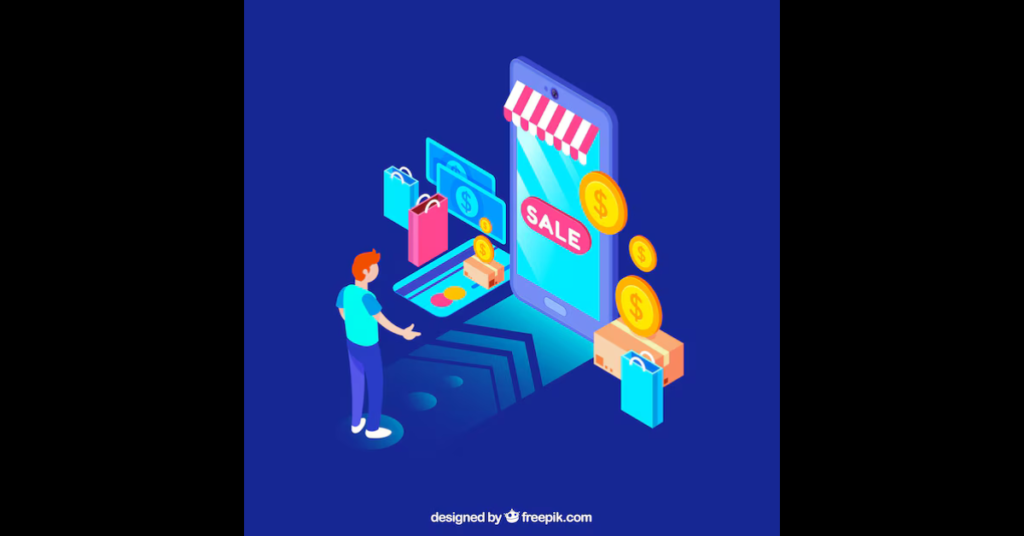In the ever-evolving landscape of technology and consumer behavior, businesses are constantly searching for innovative solutions to streamline operations, enhance user experiences, and boost profitability. One of the emerging trends transforming e-commerce is the integration of websites with dedicated storefronts, forming a unified solution known as Web&Store. This powerful concept seeks to combine the best elements of online and offline retail, offering customers a seamless experience while empowering businesses to scale efficiently.
This article will take an in-depth look at Web&Store, exploring its functionality, benefits, and its growing importance in the digital era. We will examine how it serves businesses across industries and analyze case studies that highlight its impact on revenue generation, customer satisfaction, and operational efficiency. Additionally, we will delve into the technology powering Web&Store systems and discuss the future of this innovative platform.
The Evolution of E-Commerce Platforms
To understand the significance of Web&Store, it’s essential to first examine the evolution of e-commerce. The digital revolution began in the late 1990s when businesses started moving from traditional brick-and-mortar stores to websites that offered online shopping. This shift allowed customers to browse and purchase products from the comfort of their homes.
E-commerce platforms like Amazon and eBay paved the way for an entirely new retail experience, enabling small businesses and global brands alike to reach millions of potential customers. Over time, the convenience of online shopping continued to improve as businesses adopted new technologies such as mobile-optimized websites, digital wallets, and AI-powered chatbots.
Despite these advancements, one common challenge persisted: businesses were often forced to manage separate online and physical retail systems. This division created inefficiencies in inventory management, customer service, marketing, and operations, especially as omnichannel retail strategies became more popular.
Enter Web&Store
Web&Store represents the next evolution of e-commerce by integrating online websites with physical storefronts in a single platform. This model offers businesses a streamlined, unified system to manage all aspects of sales, marketing, inventory, customer engagement, and analytics—whether a sale happens online, in-store, or through a mobile app.
With Web&Store, businesses no longer need to juggle different platforms to handle their e-commerce and physical store operations. Instead, they gain access to a powerful and versatile system that can support a cohesive omnichannel strategy.
Key Features of Web&Store
The concept of Web&Store is based on several key features that make it stand out from traditional e-commerce platforms. These features are designed to provide businesses with the tools they need to succeed in a competitive market while enhancing the customer experience.
- Unified Inventory Management: One of the main challenges businesses face is managing inventory across multiple sales channels. Web&Store solves this problem by integrating inventory systems into one platform, so businesses can track stock levels in real-time, whether products are sold online or in-store. This prevents over-selling or understocking and ensures better stock control and forecasting.
- Centralized Order Processing: By bringing together online and offline sales into a unified system, Web&Store allows businesses to process orders from all channels seamlessly. Orders can be fulfilled from a central warehouse or from a network of physical stores, depending on availability and proximity to the customer. This capability reduces delivery times, minimizes shipping costs, and provides a more efficient and satisfying customer experience.
- Integrated Marketing Tools: Web&Store platforms often come equipped with built-in marketing tools that allow businesses to create, manage, and optimize campaigns across digital and physical channels. This includes everything from email marketing and social media integrations to in-store promotions and loyalty programs, all managed from one central dashboard. These tools ensure consistent messaging and personalized customer outreach across all touchpoints.
- Enhanced Customer Experience: Customers increasingly demand a seamless shopping experience that transcends the boundaries between online and offline. Web&Store systems enable businesses to offer omnichannel shopping experiences, where customers can browse products online, check store availability, and choose whether to buy in-store or have items shipped to their homes. Features like click-and-collect (buy online, pick up in-store) and easy returns across channels make for a more flexible and convenient shopping experience.
- Comprehensive Analytics: Data is key to business success, and Web&Store platforms provide comprehensive analytics tools that track sales performance, customer behavior, and marketing effectiveness across both digital and physical storefronts. These insights allow businesses to make data-driven decisions, optimize their strategies, and identify growth opportunities. By analyzing which products are selling best in specific locations or during certain times, businesses can adjust inventory and marketing tactics accordingly.
- Scalability: Web&Store solutions are highly scalable, making them ideal for businesses of all sizes. Whether a company operates a single storefront or hundreds of locations across the globe, Web&Store can adapt to fit their needs. Cloud-based infrastructure ensures that the system can grow alongside the business without the need for extensive IT resources or infrastructure investments.
- Cross-channel Loyalty Programs: Modern consumers are looking for more personalized experiences and rewards from the brands they interact with. Web&Store platforms often incorporate loyalty programs that function seamlessly across online and physical environments. Customers can earn and redeem points regardless of how they make their purchases, leading to increased engagement and brand loyalty.
Benefits of Web&Store for Businesses
The integration of websites and physical storefronts through Web&Store provides a multitude of benefits to businesses, particularly those looking to offer an omnichannel experience. Some of the most impactful advantages include:
- Operational Efficiency: By consolidating e-commerce and brick-and-mortar operations into a single platform, businesses can streamline their processes. There’s no need to manually synchronize data between systems, and administrative tasks like order processing, inventory management, and accounting are simplified. This saves time and reduces the risk of errors.
- Cost Savings: Implementing separate systems for online and in-store sales can be costly, both in terms of infrastructure and labor. Web&Store reduces these costs by providing a single platform to manage both aspects of the business. Furthermore, the centralized nature of the platform reduces the need for redundant software and hardware investments.
- Improved Customer Satisfaction: Web&Store’s ability to offer a seamless omnichannel experience improves customer satisfaction by allowing shoppers to interact with the brand on their own terms. Whether they choose to browse online and buy in-store, or purchase online and return an item at a physical location, customers appreciate the flexibility. This convenience fosters loyalty and encourages repeat business.
- Better Marketing and Personalization: Integrated marketing tools enable businesses to target customers more effectively with personalized offers and campaigns. For example, customer data collected from both online and offline channels can be used to create tailored promotions or recommendations based on previous purchases or browsing behavior.
- Increased Sales Opportunities: Omnichannel retail strategies have been proven to boost sales. Customers who interact with a brand through multiple touchpoints—such as online browsing, mobile apps, and physical stores—tend to spend more over time. Web&Store helps businesses capture these opportunities by offering a seamless experience across all channels.
- Real-time Inventory Control: Unified inventory management allows businesses to optimize stock levels across all locations, reducing the likelihood of stockouts or overstocking. Businesses can also implement advanced techniques like dynamic pricing, where product prices can be adjusted based on demand, availability, or competitor activity in real-time.
- Enhanced Data Security: Web&Store platforms typically feature robust security measures to protect sensitive customer and business data. Integrated payment gateways ensure secure transactions, while centralized data management reduces the risk of breaches associated with having multiple disconnected systems.
Web&Store Use Cases Across Industries
The versatility of Web&Store makes it an ideal solution for businesses across a wide range of industries. Below, we explore how different sectors are leveraging Web&Store technology to enhance their operations and customer experiences.
- Retail: Traditional retailers are perhaps the most obvious candidates for Web&Store solutions. By integrating their e-commerce websites with physical stores, retailers can offer customers a consistent and convenient shopping experience. Web&Store enables features like click-and-collect, in-store stock checking, and seamless returns, all of which improve customer satisfaction and drive repeat business.For example, a fashion retailer might use Web&Store to allow customers to browse the latest collections online and check availability at their nearest store. Customers could then reserve items online and try them on in-store before making a purchase, blending the convenience of online shopping with the personalized experience of a physical location.
- Grocery: The grocery industry has seen significant growth in online shopping, particularly in the wake of the COVID-19 pandemic. Grocery stores can use Web&Store platforms to integrate online orders with in-store shopping experiences, offering customers the flexibility to choose how they want to receive their groceries.A Web&Store solution allows customers to order groceries online for curbside pickup or home delivery, while also giving them the option to shop in-store. Real-time inventory management ensures that online shoppers have access to accurate stock information, preventing frustration caused by out-of-stock items.
- Electronics: Electronics retailers face unique challenges, as customers often want to research products online before making a purchase but may prefer to see the item in person before committing. Web&Store allows electronics retailers to offer customers the ability to browse products online, read reviews, and compare features, while also enabling them to check stock availability at nearby stores.In this scenario, a customer might browse a smartphone online, compare different models, and then choose to visit the store to physically handle the device and make the final purchase in person. This omnichannel approach helps retailers capture sales that might otherwise be lost to online-only competitors.
- Home Goods and Furniture: For home goods and furniture retailers, Web&Store offers an ideal solution to bridge the gap between online browsing and in-store purchases. Customers often want to see and feel large items like couches or mattresses before buying, but they may start their shopping journey online.With a Web&Store platform, these retailers can offer detailed product descriptions and high-quality images online while allowing customers to check store availability and reserve items for in-person viewing. This hybrid approach helps drive foot traffic to physical stores while supporting online sales.
- Automotive: The automotive industry has embraced omnichannel retail in recent years, particularly with the rise of online car shopping. Web&Store allows car dealerships to integrate their websites with their physical showrooms, offering customers the ability to research vehicles online, schedule test drives, and check vehicle availability.In this case, customers can complete most of the car-buying process online, including applying for financing and signing paperwork, while still having the option to visit the dealership for a test drive and final inspection before taking delivery.
The Technology Behind Web&Store
At the heart of Web&Store platforms lies sophisticated technology that allows for seamless integration between online and offline channels. Key technological components include:
- Cloud-based Infrastructure: Web&Store platforms are often built on cloud-based infrastructure, allowing businesses to scale their operations easily without investing in physical servers or data centers. Cloud-based systems also provide enhanced security, as data is stored and backed up in secure off-site locations.
- APIs and Integrations: Application Programming Interfaces (APIs) play a crucial role in Web&Store platforms, allowing for the integration of various systems and tools. APIs enable the connection between e-commerce websites, point-of-sale (POS) systems, inventory management software, and marketing platforms, ensuring data flows seamlessly across all touchpoints.
- Artificial Intelligence (AI): AI is becoming increasingly important in e-commerce, and Web&Store platforms often incorporate AI-driven features like personalized product recommendations, chatbots for customer service, and predictive analytics for inventory management. AI helps businesses optimize their operations and offer more personalized customer experiences.
- Mobile Optimization: With the rise of mobile shopping, Web&Store platforms are designed to be fully optimized for mobile devices. This ensures that customers can enjoy a seamless shopping experience whether they’re using a desktop computer, smartphone, or tablet.
- Omnichannel POS Systems: Point-of-sale (POS) systems are a critical component of Web&Store platforms, allowing businesses to process sales both online and in-store. Modern POS systems are designed to handle transactions across multiple channels and locations, while also integrating with inventory management and customer data systems.
The Future of Web&Store
As consumer behavior continues to evolve, the importance of omnichannel retail strategies will only grow. Web&Store platforms are poised to play a central role in this transformation, offering businesses the tools they need to stay competitive in a digital-first world.
In the future, we can expect Web&Store platforms to incorporate even more advanced technologies, such as augmented reality (AR) and virtual reality (VR) for enhanced product visualization, and blockchain for increased transparency in supply chain management. Additionally, AI will continue to evolve, offering even greater levels of personalization and automation.
Ultimately, Web&Store represents the future of retail—one where online and offline channels are no longer seen as separate entities but as interconnected components of a cohesive customer experience. Businesses that embrace this approach will be well-positioned to thrive in an increasingly competitive market.
Conclusion
Web&Store is more than just a trend; it’s a revolutionary approach to retail that combines the best of online and offline shopping experiences. By integrating e-commerce websites with physical storefronts, businesses can streamline operations, improve customer satisfaction, and drive sales growth. With powerful features like unified inventory management, centralized order processing, and comprehensive analytics, Web&Store is helping businesses of all sizes navigate the complexities of modern retail. As technology continues to advance, the potential for Web&Store platforms will only grow, making it an essential tool for any business looking to succeed in today’s digital economy.







